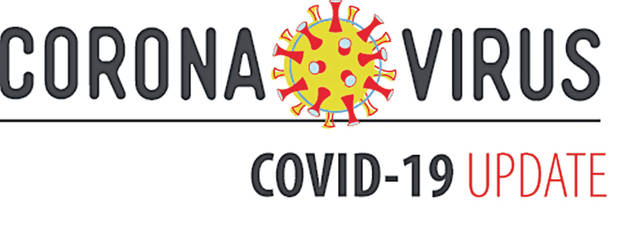
COLUMBUS, Ohio (AP) — Three weeks into Ohio’s stay-at-home order, Gov. Mike DeWine is facing increasing pressure to restart some nonessential work around the state, especially in areas with few confirmed cases of the coronavirus.
Republicans from rural Ohio who are worried about an economic collapse and owners of small businesses who fear losing their life investments are calling on DeWine to relax social distancing restrictions that brought many workplaces to a standstill.
While the Republican governor’s administration is working on a plan to gradually get people back to work, DeWine made it clear Monday that protecting the state’s residents is his first priority. So far, Ohio has avoided massive outbreaks like ones that crippled Detroit, New York City and New Orleans.
“We all want to get back to work, we all want to get back to normal,” DeWine said. “But we have this monster out there that is lurking.”
DeWine has been praised widely for acting quickly to thwart the virus, but he faces even more challenging decisions about how and when to lift restrictions amid growing restlessness from within his own party. The biggest question he must wrestle with is whether allowing some businesses to get back to normal could lead to a second wave of COVID-19 cases.
Both Republicans and Democrats in the Ohio House are gathering ideas on how to manage a restart as part of an economic recovery task force.
Some lawmakers, though, say there is no time to waste and suggest that decisions on reopening barber shops, gyms and furniture stores be made by local health departments on a county-by-county basis.
“We’re at a point now where the metrics show rural Ohio needs to be looked at differently than the metros,” said Craig Reidel, a Republican from northwestern Ohio. “Not three weeks from now. Today. Now it’s time to look at letting up.”
In Putnam County, which recorded its first positive case just this week, Health Commissioner Kim Rieman said she thinks social distancing measures are the reason rural Ohio numbers have been low.
“Of course we want the economy to get up and running as quickly as it can, but we want them to do that in a safe manner so we don’t have another upswing in cases,” she said Tuesday.
Opening businesses in her county and not everywhere else, she said, could bring in people who are infected but not showing symptoms. “I think that it would be very hard to do it in one place and not do it in another,” Rieman said.
More testing is needed to determine how the state moves forward and help identify how progress is being made geographically, DeWine said this week. But “no part of the state has really been spared,” he added.
DeWine said he’s been getting advice from all corners, including the White House. President Donald Trump asserted on Monday that he had the ultimate say on when and how to reopen the economy.
Rep. Stephanie Howse, a Democrat who represents parts of Cleveland’s east side, said it’s fine to begin talking about how to lift parts of Ohio’s stay-at-home order but too early to put that into motion.
Those decisions should be made with input from public health officials relying on data, she said, noting there isn’t enough testing currently to know how widespread the virus has become, including in rural areas.
“We’re all getting anxious,” Howse said. “It’s hard to stay still. But we need to stay still.”
Republican U.S. Sen. Rob Portman said Tuesday he could see certain regions opening before others, but not individual states.
“We’re in a group of states in this part of the country that would reopen together,” Portman said, adding: “I don’t think there would be a division in Ohio.”
Of course, it’s not just business owners who might be ready for work to resume. Nearly 700,000 people in Ohio filed for unemployment in the last three weeks.
In rural Gallia County in southeastern Ohio, which has just eight cases and one death, Tiffanie French has struggled to file an unemployment claim since losing her factory job a month ago.
She is the sole source of support for her three children, ages 12 to 16, and doesn’t have any other income. If the county opened before other parts of the state, “I would go back to work, as long as I wore my mask and we were able to wash our hands,” she said. “As long as they follow procedures.”
___
CASES
To date, Ohio has confirmed more than 7,200 cases and 324 deaths, according to new federal guidelines that allow cases and deaths considered “probable” COVID-19 infections without a positive test. Positive tests show nearly 7,100 cases and 309 deaths. The pandemic has caused more than 2,100 hospitalizations in Ohio, with about 650 people needing treatment in intensive care units.
DeWine warned Tuesday that only when a COVID-19 vaccine is available will a full return to regular life be possible.
Health Director Dr. Amy Acton said an order will be issued providing the names and addresses of coronavirus patients to dispatchers so emergency responders will have the information.
___
ECONOMY
The Ohio Department of Transportation said more than 200 food truck vendors signed up for a free permit allowing them to sell food during the pandemic at highway rest stops to give truckers more options with restaurants closed except for takeout.


